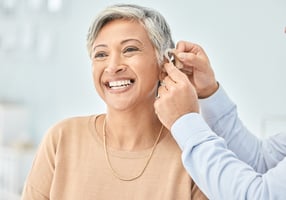Higher-than-average social media use as a tween was associated with greater depression the...
Youth With Internalizing Conditions Spend More Time on Social Media, Feel Lack of Control Online

Youth with mental illness spend significantly more time on social media than those without, reports a study published today in Nature Human Behavior. However, only youth with internalizing conditions such as depression or anxiety disorders were more likely to feel a lack of control about their social media use or engage in other unhealthy online behaviors.
Luisa Fassi, M.Sc., of the University of Cambridge, and colleagues examined data from 3,340 English youth ages 11 to 19 (50% female) who participated in the 2017 Mental Health of Children and Young People study and identified themselves as using at least one social media site. In addition to completing online surveys, the youth had face-to-face clinical interviews to identify the presence and severity of mental health symptoms. In total, 529 youth in the sample (16%) had a mental illness.
Overall, youth who had a mental illness spent significantly more time on social media weekly than those without (average 2.8 hours versus 1.9 hours, respectively) and were also less satisfied on average with their number of online friends. When looking at subcategories of mental illness, the researchers uncovered additional differences. Youth with an internalizing condition not only spent more time online (around three hours weekly) and were less happy about their online friend count, but they also engaged more frequently in online social comparisons, were more likely to say that social media feedback (e.g., number of likes) impacted their mood, and were more likely to feel lack of control about their time spent online.
Contrary to the researchers’ hypothesis, a lack of control was not a problem among youth with an externalizing condition such as a conduct disorder or attention deficit/hyperactivity disorder. In fact, the only meaningful difference for youth with an externalizing condition relative to youth with no mental illness was that they spent more time online, the researchers wrote.
“The results have implications for clinical practice. Specifically, we find key aspects of social media engagement that could inform the creation of guidelines for patient consultations and early intervention strategies,” Fassi and colleagues continued. Examples would be psychoeducation and behavioral therapies focusing on social comparisons and social media feedback, especially in youth with internalizing symptoms.
For related information, see the Psychiatric News article “Ask Young Patients About Social Media Use.”
(Image: Getty Images/iStock/martin-dm)
Don't miss out! To learn about newly posted articles in Psychiatric News, please sign up here.





